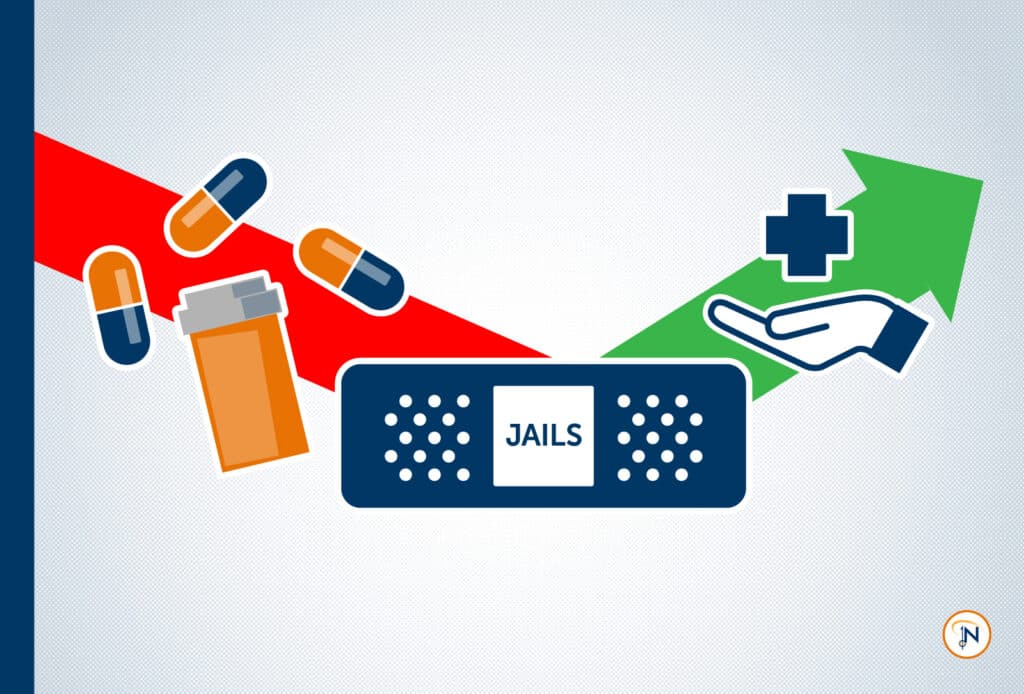In many communities, jails have become the area’s largest drug treatment center.1 Nearly two thirds of jail inmates meet the criteria for drug dependence or abuse;2 at least one sheriff estimates that number is closer to 80-90%.1
The opioid health crisis is making headlines nationwide and cost over $1 trillion between 2001 and 2017, a number that continues to climb.3 It’s impacting all types of communities, and jails are at the center of the crisis.
What is the jail’s role in treatment and intervention? What’s best for individuals, communities, and public safety?
The position of the National Sheriffs’ Association is clear: When jails provide appropriate medication-assisted treatment (MAT) to individuals with opioid use disorders (OUDs), it can stem the arrest-incarceration-release cycle, increase facility safety, and reduce system costs long-term.4
In the near-term, however, providing MAT can feel overwhelming because of the logistics, immediate cost, and the general unpreparedness of most jails to dramatically shift their role in the community.
These are valid concerns – jails simply aren’t designed to be medical treatment facilities at this scale. Add in ADA concerns, staffing challenges, availability of physicians, methadone clinic certifications/partnerships, addiction therapy and other ongoing interventions … the list goes on, and it doesn’t get any easier. But the need is there, and the evidence shows MAT as part of an overall treatment plan works.
The opioid crisis has created an unmatched challenge in the history of correctional facilities, and it’s not going away anytime soon. Jails are uniquely positioned to step up and make a difference, and many are. As of January 2018, jails in 30 states provide MAT, and the number is climbing.4 As more jails find ways to stand up to opioids in their communities, it paves the way for others to follow.
Is this a turning point in the opioid crisis? We hope so.
We’re already seeing positive progress. In Rhode Island, overdose deaths among former prisoners fell by 61% in just one year after MAT protocols were implemented.5
Change can’t happen overnight, but it has to start somewhere. If you’re struggling with your jail’s role in the opioid crisis, give us a call. We have learned from decades of experience in this field, and we can help ease the logistical burden of implementing new processes. Let’s start turning the tides together.
1 National Public Radio, April 24, 2019
2 Bureau of Justice Statistics
3 Altarum
4 National Sheriffs’ Association
5 Governing the States and Localities






